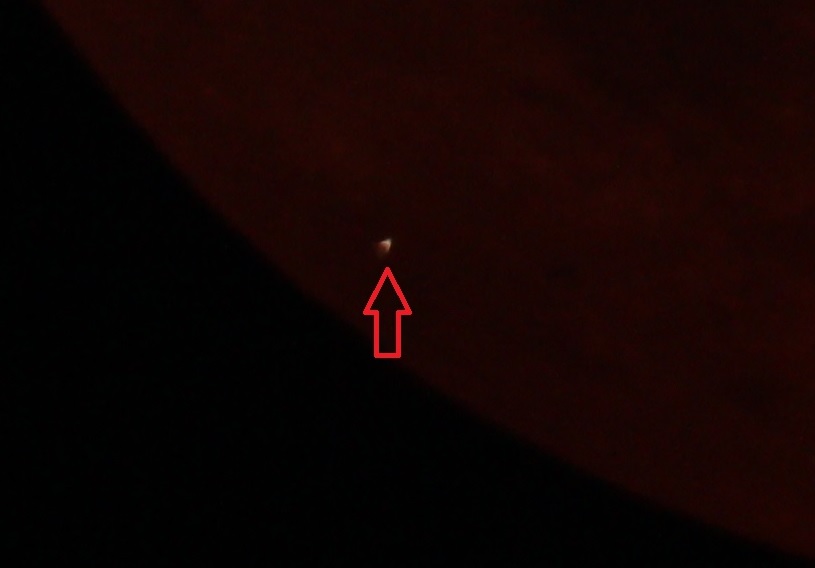Watch a Meteor Smack the Blood Moon in This Lunar Eclipse Video!
This weekend's stunning lunar eclipse seems to have come with a little extra flash, thanks to a brilliant coincidence — a burst of light at about the time totality began, marking the end of a meteorite's journey to the moon.
The meteor strike takes place in the region darkened by Earth's shadow, as you can see in videos of the eclipse.
There's no reason to worry. The moon regularly suffers impacts; the collisions are how the lunar surface acquires an average of 140 new craters a year — and that tally only includes those more than 32.8 feet (10 meters) across. [Amazing Photos of the Super Blood Wolf Moon!]
Scientists are sometimes lucky enough to have instruments in the right place at the right time to catch the flash of light accompanying the high-speed impact. (A Spanish telescope caught sight of two such impacts in quick succession in July 2018.) But this impact came as people around the world looked to the sky — and livestreamed telescope broadcasts — to watch the total lunar eclipse, the last until 2021.
Meteorite impacts aren't just flashy, there's also real scientific knowledge to be learned from them. NASA has a team dedicated to monitoring these flashes because they can teach us about the debris cluttering our solar system.
There's value to looking back in time as well. The moon's surface offers a detailed historical record of impacts, since there aren't nearly as many forces there as on Earth that wipe away craters — no rain, no plate tectonics. And unlike Earth, the moon doesn't carry a thick protective atmosphere that burns up smaller pieces of debris. That means the lunar surface can act as a stand-in for scientists who want to understand how many impacts have hit Earth over the eons.
The eclipse impact will be one more crater for scientists to pore over.
Breaking space news, the latest updates on rocket launches, skywatching events and more!
Email Meghan Bartels at mbartels@space.com or follow her @meghanbartels. Follow us @Spacedotcom and Facebook. Original article on Space.com.

Meghan is a senior writer at Space.com and has more than five years' experience as a science journalist based in New York City. She joined Space.com in July 2018, with previous writing published in outlets including Newsweek and Audubon. Meghan earned an MA in science journalism from New York University and a BA in classics from Georgetown University, and in her free time she enjoys reading and visiting museums. Follow her on Twitter at @meghanbartels.


